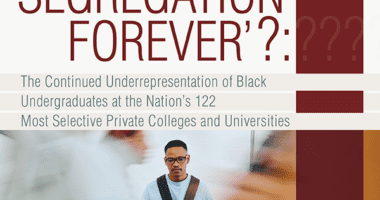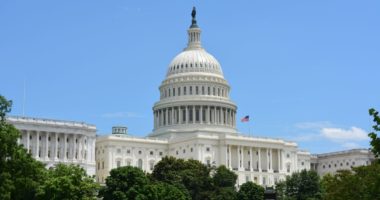Dispelling Myths About ‘Tough Love’ — Part Two
Nearly 300 positive and negative comments came into The New York Times editorial page earlier last week after it favorably discussed Ed Trust’s new report, Tough Love: Bottom-Line Quality Standards for Colleges. We’ve been encouraged by the positive feedback we’ve received. But we decided to pull out the most common negative comments and offer responses in an effort to continue the discussion on accountability in higher education. On Friday, we addressed a few of those comments; today, we take on a few more. We welcome continued dialogue.
6. Why should colleges be held responsible for deadbeat students who don’t repay their student loans?
While individual students may not repay their loans for a variety of reasons, it’s a red flag if a large percentage of students at a single institution fail to pay back their loans. That’s an indicator that something’s wrong with the institution as a whole. Colleges can provide better academic support to get students through to graduation. They can alter their financial aid policies so as to not load up needy students with enormous levels of debt. And we’ve seen colleges engage in loan counseling activities to keep their default rates low.
7. It’s unfair to punish low-resourced colleges for poor results when they need additional resources to improve. Doing so is apt to force tuition increases to finance improvement.
That’s why we propose help for under-resourced nonprofit institutions to get them to improve, rather than shifting additional costs onto other students. We recognize that some institutions play a vital role in educating large numbers of underserved students, yet have been terribly underfunded. We call for the federal government to provide financial and technical assistance, and give institutions time (three to four years) to improve. The goal is to spur institutions to improve, not to punish them. But at some point, we have to ask ourselves, how low is too low to be entitled to government support?
8. It’s unfair to punish public universities that are subject to state funding cuts or overall low levels of state funding. Flagships often receive less than 10 percent of their operating budget from state funds.
It’s not, and that’s why we suggest additional financial resources for low-performing public “college dropout factories” and “diploma mills.”
But with respect to low-access, selective colleges, including flagships like the University of Virginia (U.Va.), we have to be careful about what the numbers show us. Some public universities deflate the percent of state dollars received for postsecondary academic services by inflating the comparison size of their overall budget (the denominator). They include ancillary services, like the costs of running an affiliated hospital, instead of looking at state funding measured against the cost of the core academic program, which is what state higher education money is designed to support.
Moreover, it’s the overall historic public investment in particular colleges, over decades — or centuries in the case of the U.Va. — that created the physical infrastructure, not to mention brand names, for many public flagships, which now enable them to sustain and generate ample institutional wealth.
9. The only way for colleges to enroll more low-income students would be to increase tuition on everyone else so that they can have sufficient resources for financial aid.
More than 80 percent of the colleges we identified as low-performing on access are private universities. Collectively, low-performing access colleges hold a total of $168.8 billion in endowment wealth. These “engines of inequality,” as we call them, have ample resources to recruit, admit, and support more low-income students without shifting the cost onto wealthier students.
Consider, for example, Washington University in St. Louis. In 2011, it enrolled only 6 percent Pell-eligible freshmen, yet held a $5.3 billion endowment. Meanwhile, similarly selective and elite private colleges, like Amherst and Vassar — with one-third to one-sixth the endowment resources ($1.6 billion and $0.8 billion, respectively) — managed to enroll 23 percent and 27 percent Pell students.
A few public flagships are also mimicking this behavior. U.Va., with a $4.7 billion endowment, has a wealth that dwarfs the resources at University of North Carolina–Chapel Hill and the State University of New York–Binghamton: U.Va. is more than twice as wealthy as UNC–Chapel Hill ($2.2 billion) and more than 75 times as wealthy as Binghamton ($0.06 billion). But again, both UNC–Chapel Hill and SUNY–Binghamton are enrolling many more low-income students.
American higher education can do better. Those institutions that need them should get added resources. But there also should be an insistence on bare minimum results from all colleges and universities that currently receive massive amounts of federal support. Students and the country deserve no less.
[starbox id=none]









